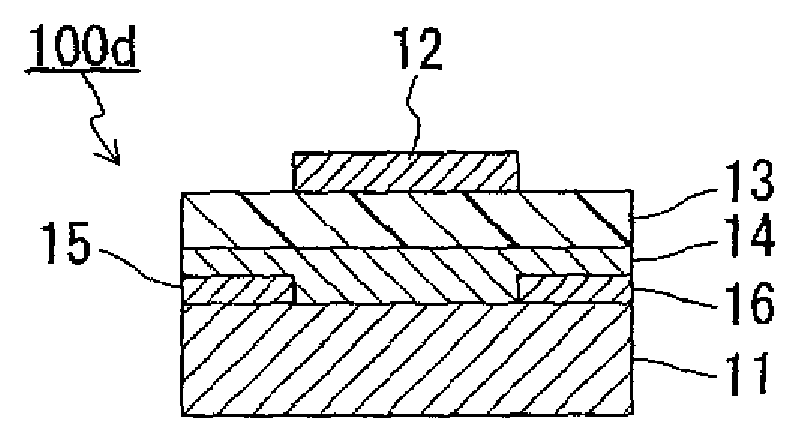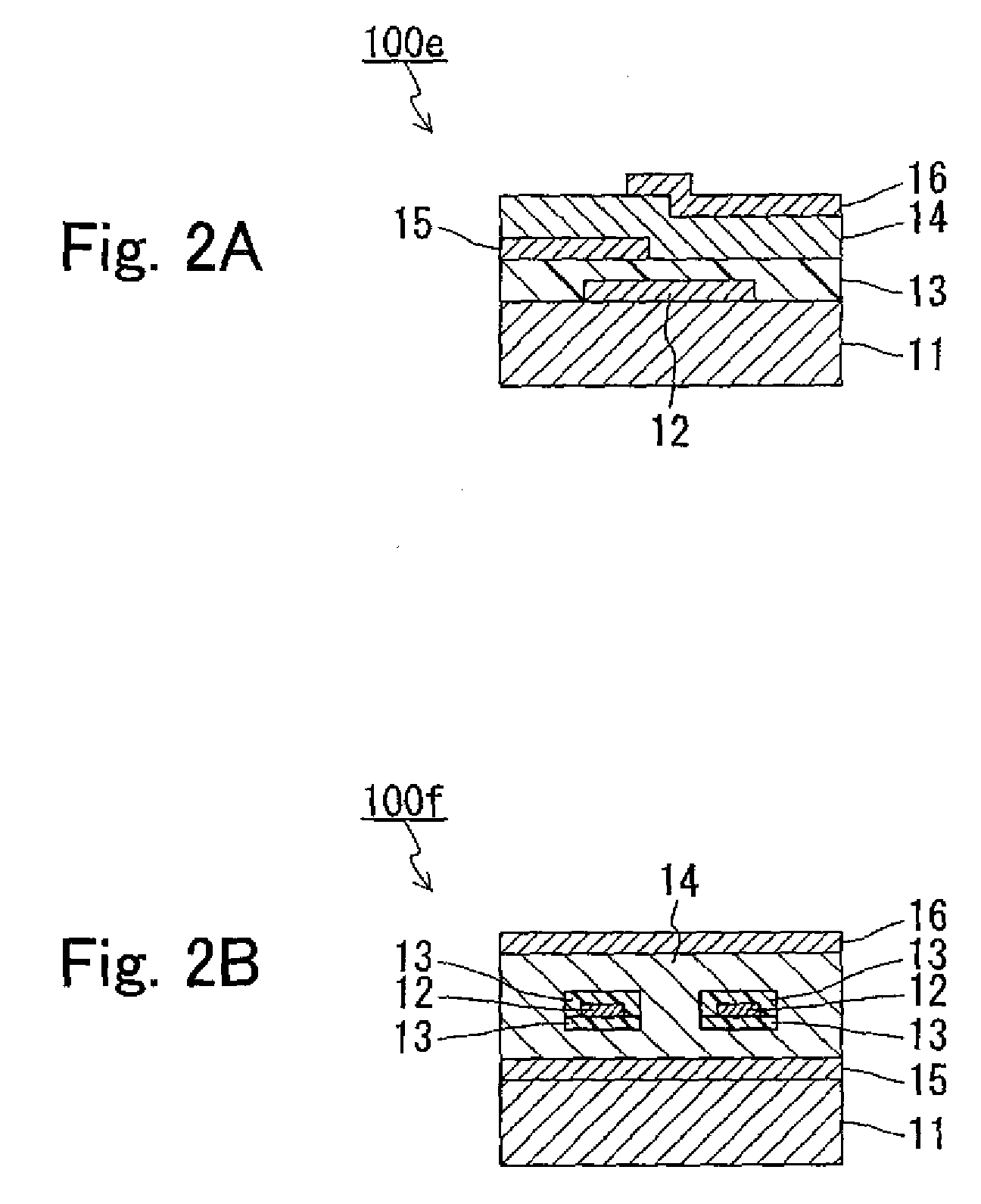Electronic device, process for producing the same and electronic equipment making use thereof
a technology of electronic equipment and electrodes, applied in thermoelectric devices, instruments, material analysis, etc., can solve the problems of high driving voltage applied to device elements, difficult to obtain bulk properties, and difficult to obtain desired functions, so as to reduce the connection resistance between the electrode and the conductive organic molecule layer, the effect of reducing the variation of the connection resistan
- Summary
- Abstract
- Description
- Claims
- Application Information
AI Technical Summary
Benefits of technology
Problems solved by technology
Method used
Image
Examples
embodiment 1
[0091]In Embodiment 1, a case in which an oligothiophene derivative is employed as the first organic molecule composing the semiconductor layer of the TFT is described.
[0092]FIGS. 1A to 1D are cross-sectional views that schematically show a typical example of the TFT of the present invention. As shown in FIGS. 1A to 1D, the TFT of the present invention has various configurations. Any of these TFTs is provided with a substrate 11, a gate electrode 12, a gate insulating layer 13, a semiconductor layer (an organic molecule layer) 14, a source electrode 15, a drain electrode 16 and an electrode modifying layer (not shown). The gate electrode 12 faces the semiconductor layer 14 having the gate insulating layer 13 in between. An electric field applied to the semiconductor layer 14 by the gate electrode 12 controls turning on or off. The electrode modifying layer is composed of the second organic molecules, and the semiconductor layer 14 of the first organic molecules.
[0093]Generally, TFT ...
first example
[0100]An example of manufacturing the TFT 100b shown in FIG. 1B is described as a First Example. In this Example, a polyethylene terephthalate (hereinafter, also referred to as “PET”) film was employed as the substrate 11. The gate electrode 12 was formed by nickel (Ni), and the source and the drain electrodes 15 and 16 were formed by a material that contains gold (Au) as its main component. The organic molecules composing the electrode modifying layers are described later. The gate insulating layer 13 was formed by polyvinyl alcohol. The semiconductor layer 14 was formed by an oligothiophene derivative, which is one of n electron conjugate system molecules.
[0101]FIG. 3A shows the molecular structure of the oligothiophene derivative composing the semiconductor layer 14. FIG. 3B schematically shows the state of a bond and n electron cloud of the oligothiophene derivative. FIG. 3C is a perspective view that schematically shows the π conjugate plane of the oligothiophene derivative wit...
second example
[0119]An example of manufacturing the TFT 100d shown in FIG. 1D is described below. In this Example, the components except the electrode modifying layer were formed by the same materials as the First Example.
[0120]In this example, an electrode modifying layer was formed by the organic molecules shown in FIG. 7A or 7B. Since the source and the drain electrodes were formed by Au in this example as well, disulfide (FIG. 7A) and a compound having mercapto groups (FIG. 7B) were employed for organic molecules through which a tight bond on the Au electrode surface could be expected. The naphthalene portions in the molecule of FIG. 7A and the porphyrin rings in the molecule of FIG. 7B are the main π conjugate planes. In the molecule of FIGS. 7A, S-S linkage is cut and the sulfur atoms and the Au atoms are bonded chemically. In the molecule of FIG. 7B, the sulfur atoms in the mercapto groups and the Au atoms are bonded chemically.
[0121]Hereinafter, the method of manufacturing the TFT 100d in...
PUM
| Property | Measurement | Unit |
|---|---|---|
| angle | aaaaa | aaaaa |
| angle | aaaaa | aaaaa |
| angle | aaaaa | aaaaa |
Abstract
Description
Claims
Application Information
 Login to View More
Login to View More - R&D
- Intellectual Property
- Life Sciences
- Materials
- Tech Scout
- Unparalleled Data Quality
- Higher Quality Content
- 60% Fewer Hallucinations
Browse by: Latest US Patents, China's latest patents, Technical Efficacy Thesaurus, Application Domain, Technology Topic, Popular Technical Reports.
© 2025 PatSnap. All rights reserved.Legal|Privacy policy|Modern Slavery Act Transparency Statement|Sitemap|About US| Contact US: help@patsnap.com



